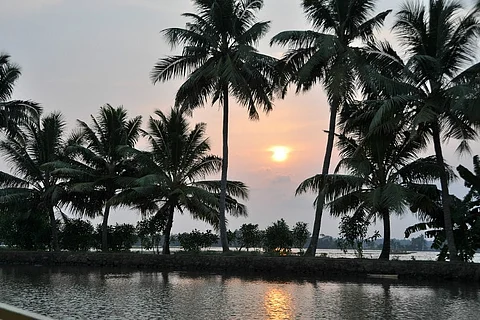

Kerala is currently experiencing an advanced demographic transition as the mortality and fertility levels have come down and so migration plays a critical role in shaping the future demographic scenario, said a report released here on Monday.
The report, titled 'Impact of mortality and fertility transitions in Kerala on migration and its implications for state's economy', was put together by a team led by noted demographer S. Irudaya Rajan of the Centre for Development Studies here.
"Kerala was the first Indian state to achieve Infant Mortality Rate (IMR) below 25, in 1989, while the state further reduced the IMR to 10 in 2016. But with an IMR of 34 in 2016, India has a long way to catch up with Kerala," said Rajan.
The study showed that significant strides were also made by Kerala in improving life expectancy at birth.
During 1951-60, the male and female life expectancies at birth for Kerala were 44.2 years and 48.1 years respectively which advanced to 72.2 years and 78.2 years during 2011-15.
"With the significant fall in levels of mortality, the fertility levels have also come down considerably. Kerala was the first Indian state to achieve below replacement level fertility in 1987, while India is yet to achieve this demographic milestone even during 2015-16 while Kerala's Total Fertility Rate (TFR) has further dipped to 1.6," said Rajan.
The combined effect of the reduction in mortality and fertility rates in the state has been a decline in the natural growth rate of the population.
However, the population of Kerala has doubled from 16.9 million in 1961 to 33.4 million in 2011.
In the past six decades since the formation of the state, age-specific growth rates too have significantly declined in line with the overall population growth rates, with an exception of population of 60 years and above.
The study pointed out that negative growth rates were observed in the case of young population (0-14 years) during the past three decades.
Rajan said the mortality and fertility changes accompanied by a host of social determinants facilitated this inward and outward migration.
International migration from Kerala was initially directed towards a few South Asian countries.
By 1960, Keralites found a place in the British colonies such as Malaysia and Singapore, countries in the African region and had also moved to developed countries in North America and Western Europe.
The oil boom in the Middle East triggered heavy migration from Kerala to countries in this region. The number of international migrants peaked during 2013 with 2.4 million migrants from Kerala living outside the country and then declined to 2.2 million in 2016.
During 1961-81, most of the migrants from Kerala moved within India as there was a significant outflow of persons from Kerala to Mumbai, Chennai, Kolkata, Delhi and other states.
"As a consequence, there will be a further decline in the international migration from Kerala to the traditional destinations. The ageing of the population and decline in the number of people in the migration-prone age groups are also likely to accentuate this downward trend.
"The rate of growth of Kerala's native population will start declining within a decade or so. The fertility and mortality indicators of the native population have already reached near saturation levels. Migration is the only component that can significantly alter the emerging population scenario in Kerala," said Rajan.